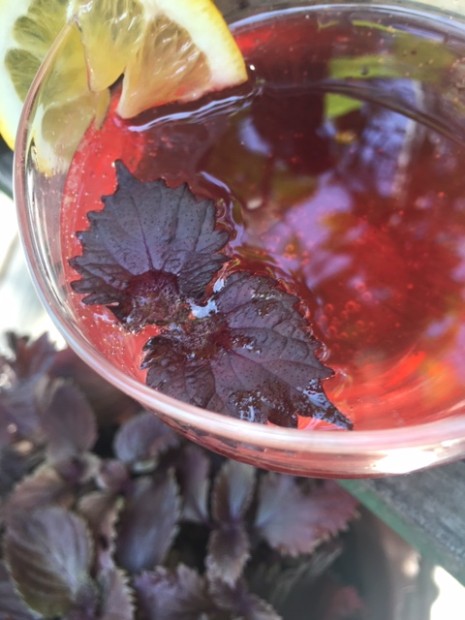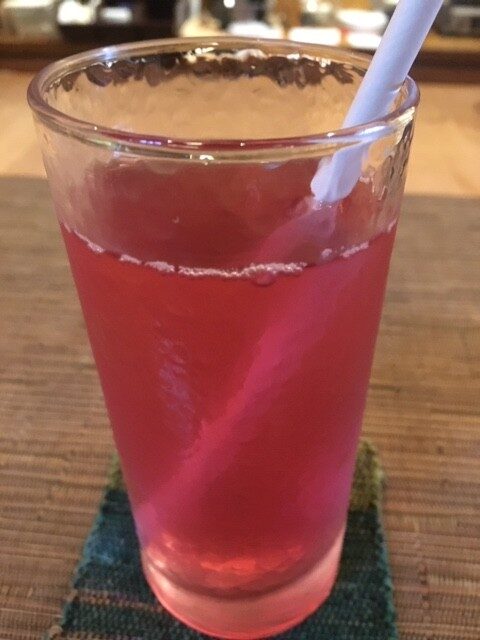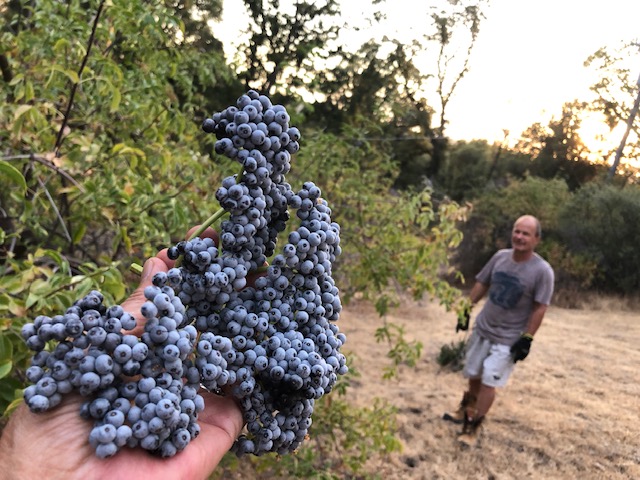
One of the seasonal works I do in summer with Eric is harvesting wild elderberries in North Fork.
It is usually after Umeboshi plums making in the end of June to the end of July.
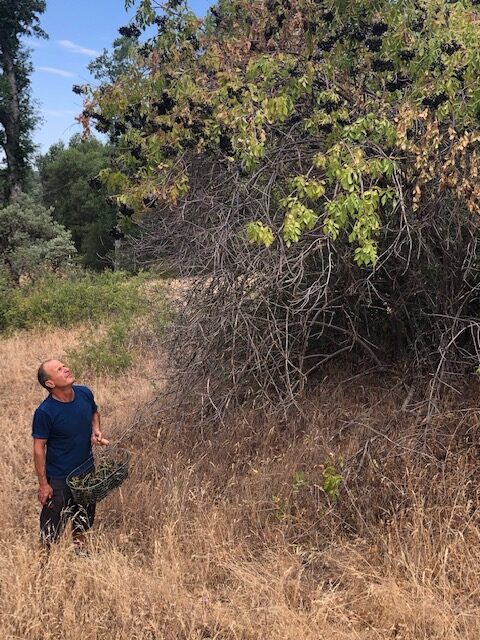
Elderberry has antioxidants and many benefits for our health.
I posted my blog before on how to make elderberry tea with more information about its benefits.
https://sanaesuzuki.com/2017/02/27/healing-elderberry-tea/
I was making elderberry tea with dried elderberry most of the time since I could not harvest many fresh ones, but last year the timing was perfect when I went to North Fork, so I got so many fresh elderberries.
I saved some to dry for making tea later and tried to make enzyme syrup, juice and jam with extra fresh elderberry.
I only made Ume plum enzyme juice and Kombucha, so I did not know how elderberry works for making the enzyme syrup/juice. Wow, wow…it was so delicious. Beautiful enzyme bubbles!!!
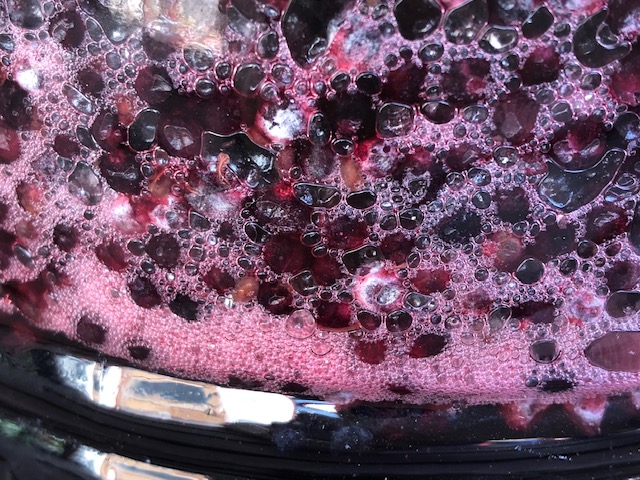
I wanted make it again this year so every time I went to North Fork this year, I checked elder trees and hoped I would be able to harvest enough fresh ones this year too.
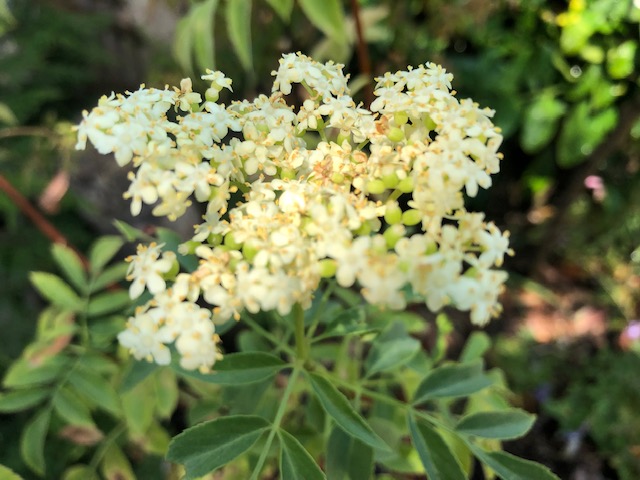
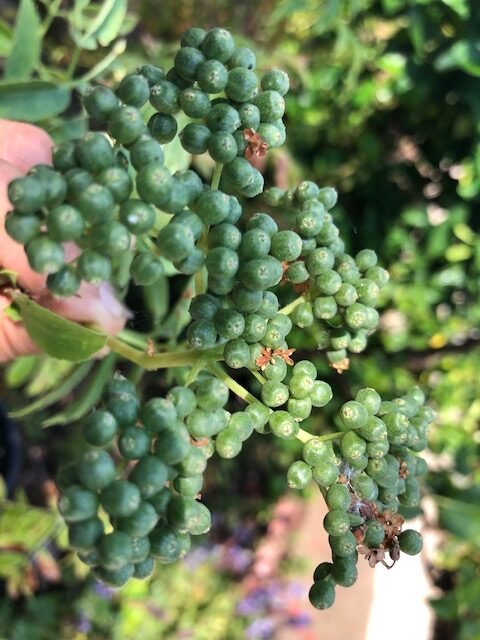
The elderberry flowers had a soft aroma (I made syrup and skin oil with the flowers, which I will share someday). After the flowers, the green berries were so cute.
Elder trees did not disappoint me. Thank you, elderberry trees!
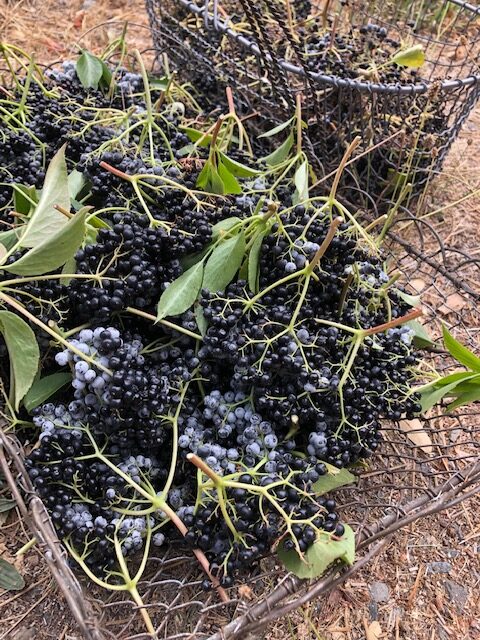
Here is the juice I made this year.
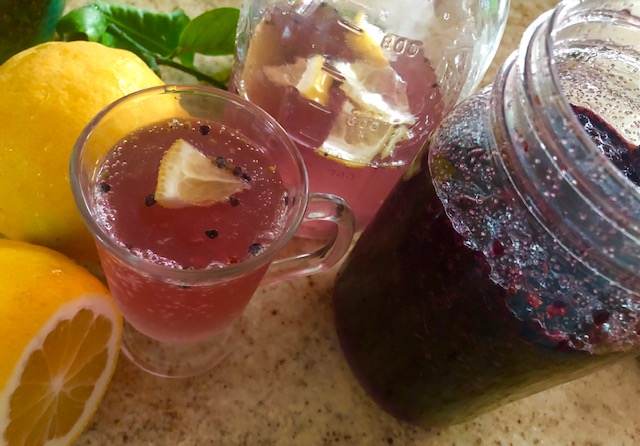
It is similar to Red Shiso Juice I shared before.
https://sanaesuzuki.com/2019/07/22/red-shiso-juice-delicious-summer-remedy-drink-for-health/
The difference is I did not add any water and no cooking. It is only elderberries and beet sugar. They are fermented together.
Elderberry Enzyme Juice Recipe
Ingredients
- 300 g (about 10 oz) fresh elderberries
- 150~600 g (about 5~20oz) sweetener (I used beet sugar)
To make juice to drink
- 1 tablespoon, less or more (depending on how sweet you want)
- 1 cup, cold sparkling water, cold spring water, or hot spring water
- 1 tablespoons, lemon juice and a slice of lemon
Instructions
1. Prepare elderberries; trim the stems from elderberries after harvesting them. You can leave some of the leaves and stems for enforcing enzymes. There might be insects, so be careful handling them.
2. Wash elderberries with water and cleans them carefully.
3. Strain the water of elderberries in a basket and dry them as much as you can.
4. Place elderberries in a bottle jar and add beet sugar.
5. Shake the jar to mix them as much as you can.
6. Leave them a cool dark place near you and shake it every day or every other day. You can also mix it with your clean dry hand.
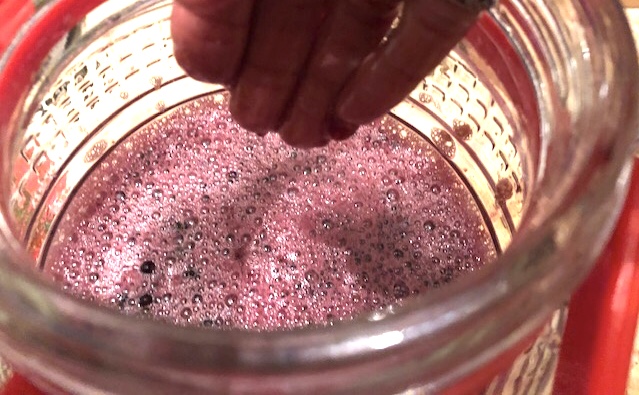
7. It should be ready to drink in about 3~4 weeks.
8. To drink Elderberry enzyme syrup as juice, you put 1~2 tablespoons of elderberry enzyme syrup and add about 1 cup of cold sparkling water or spring water. I usually do not put ice cubes, but If you like, you can add ice cubes. Lemon juice and a slice of lemons enhance the taste too.
You can also put hot/warm water for someone who loves a warm drink/tea.
I hope you like it and enjoy Elderberry Enzyme Juice!
Love, Sanae ❤️
P.S. Here is Elderberry Mocktail recipe that I posted for new year, if you like to try something new.
https://sanaesuzuki.com/2020/12/31/new-year-elderberry-mocktail/

